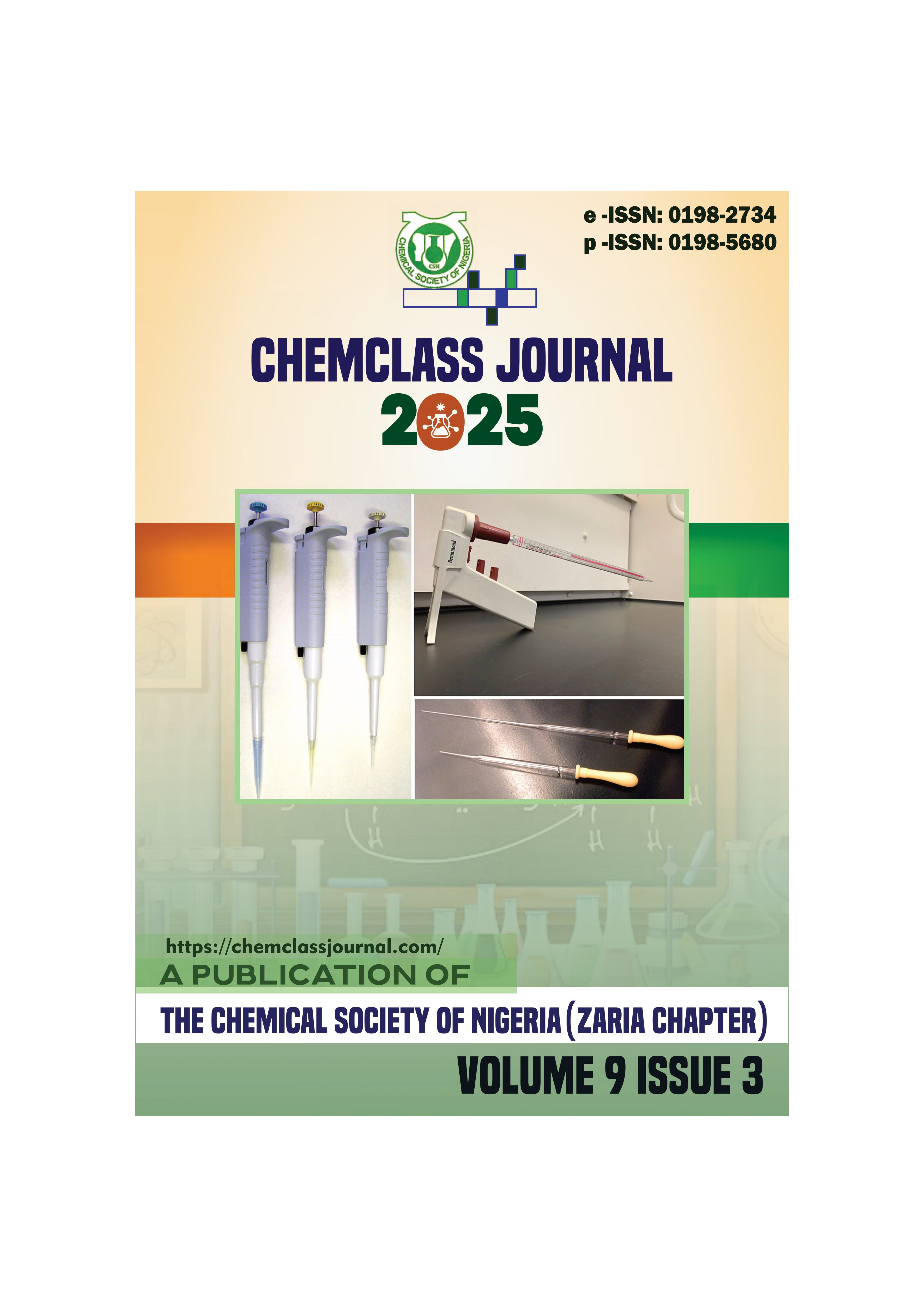Phytochemical, Nutritional, and Antinutritional Characterization of Hibiscus sabdariffa Calyces: Quantitative Profiling and Functional Implications
DOI:
https://doi.org/10.33003/chemclass-2025-0903/10Keywords:
Antioxidant capacity , Anti-nutritional factors , Hibiscus sabdariffa , Nutritional composition , Phytochemicals , Proximate analysis , VitaminsAbstract
Red and green Hibiscus sabdariffa calyces grown in Minna, Nigeria, were examined for their nutritional, antinutritional, and antioxidant qualities. Using conventional titrimetric, spectrophotometric, and colorimetric techniques (with calibration curves R2, calculated), samples (n = 3) were examined for proximate composition, minerals, vitamins, and phytochemicals. The 2,2-diphenyl-1-picrylhydrazyl (DPPH) test was used to measure antioxidant activity. Green calyces were higher in fibre, ash, calcium, vitamins D and E, and flavonoids, whereas red calyces had greater levels of protein, fat, vitamins A and C, alkaloids, and tannins. Strong antioxidant capacity were demonstrated by both types (>90% inhibition at 5 mL), with red calyces exhibiting somewhat higher scavenging activity. Levels of antinutritional elements, such as cyanide, nitrates, tannins, and phytates, were found to be below international safety criteria. The current findings support varietal variations and highlight complementing nutritional functions when compared to reported ranges for African and Asia roselle accessions: green calyces offer improved fibre and calcium, while red calyces are remarkable for antioxidants and protein. This work offers the first comprehensive compositional characterisation of H. sabdariffa calyces from Minna, Nigeria, and emphasises their potential as safe dietary supplements and functional food ingredients.





 ChemClass Journal
ChemClass Journal
